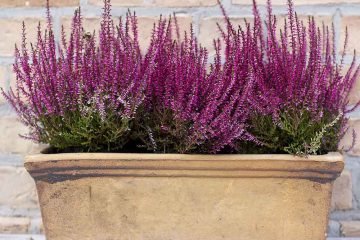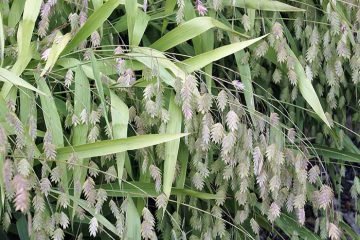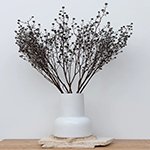Aster flower
Aster flower specifications
- Scientific name : Leucanthemum
- Common Names : Asters, New England asters, frost flowers
- Botanical Name : Symphyotrichum spp
- Plant type : Herbaceous, perennial
- Order : Asterales
- Family : Asteraceae
- Subfamily : Asteroideae
- Tribe : Astereae
- Subtribe : Asterinae
- Genus : Aster
- Mature Size : 1–6 ft. tall, 1–4 ft. wide
- Sun Exposure : Full
- Soil Type : Loamy, well-drained
- Soil pH : Neutral, acidic
- Bloom time : Summer, fall
- Flower Color : Purple, pink, blue, white
- Native : North America regions
Aster flower is a flowering plant in the Asteraceae family and is sometimes called the star flower. This flower is native to the American regions that are now scattered all over the world. This category of flowers is very beautiful and diverse and has different species with countless colors. Bellis perennis flower is one of the most famous of these species. Aster flowers are small flowers that have different colors.
read more : Everything about hydrangeas : How to Plant & care for Hydrangea

These beautiful flowers appear from early spring and remain lush until autumn. The main origin of this plant is Europe and East Asia. This flower is also found wild in Iran in the western parts, especially in Boroujerd, Korand Gharb, Dasht-e Mahi and Sahneh and is planted in most parts of the country.
The best time to plant aster flowers is late winter or early spring or early autumn and the best way to plant this flower is through seeds.
Types of aster flowers
- Aster ageratoides – rough-surface aster
- Aster alpinus – alpine aster
- Aster altaicus
- Aster amellus – European Michaelmas daisy, Italian aster
- Aster arenarius – beach-sand aster
- Aster bellidiastrum
- Aster fastigiatus – highly-branch aster
- Aster glehnii – Ulleungdo aster
- Aster hayatae – Korean montane aster
- Aster hispidus
- Aster iinumae – perennial false aster
- Aster incisus – incised-leaf aster
- Aster lautureanus – connected aster, mountain aster
- Aster maackii – Maack’s aster
- Aster magnus – magnus aster
- Aster neoelegans
- Aster quitensis
- Aster spathulifolius – seashore spatulate aster
- Aster tataricus – Tatarian aster, Tatarinow’s aster
- Aster tonglingensis
- Aster tongolensis
read more : Iran medicinal plants
Export of dried aster flower
Export of dried aster flower is one of the important native medicinal plants in Iran, the export of which requires a comprehensive and correct plan for marketing in international markets. One of the most valuable medicinal plants is aster flower, which is grown in Iran as a wild flower and can even be cultivated.
This plant species has been the basis for the production of more than 70 types of drugs in the world, which are used in combination with other medicinal compounds. Unfortunately, due to the lack of attention to the processing sector of medicinal plants, many domestic products and wild plants are exported from the country unprocessed. dried aster flower
This lack of investment in the conversion industry sector has benefited markets and export target countries, as they re-sell their products to Iran at a much higher price. In addition to its decorative aspect, dried aster flower has many usages in traditional medicine and pharmacy.
The reasonable price of dried aster flower has caused the sale and purchase of dried aster flower for export to bring great profits to the exporters and wholesalers of dried aster flower , and in this way, it will also help the country’s economy and currency.
read more : Drying natural flowers | Introducing 8 wonderful ways to dry flowers
How To Grow Asters
As mentioned, growing aster flowers is quite easy. However, to ensure they bloom at their best, keep in mind the following factors :
Where to Plant Asters
Asters prefer cooler climates and moist summers with cool night temperatures. However, if you live in a warmer climate, simply plant your asters in an area away from the midday sun. The soil you plant your aster in should be well-drained.
When to Plant Asters
The best time for you to plant your asters is in mid – to late spring. However, if you are planning to keep your asters potted, you can plant them as soon as they become available, which is usually in autumn.
How to Plant Asters
Be sure to plant your asters between one and three feet apart, depending on the variety of asters you have and how big you expect them to get. Sow the seeds at least one inch deep in the soil and if you are potting them, place them in a sunny location. If you’re planting young plants, be sure to move them outside only once the danger of frost has passed. dried aster flower
read more : Everything about fern plant : How to Plant & care for them
Propagation
There are several ways to propagate asters, each producing relatively reliable results. For those who want full control of the growing process, start by growing from seed. Existing plants with plenty of growth can be divided after a few years. Alternatively, you can steal a few cuttings from your neighbors garden (prior permission recommended) and propagate that way.
-
Propagating From Seed
If you have an existing aster in your garden, collect the seeds after flowering for propagation. The seeds look similar to dandelion seeds – fluffy and light brown. These seeds can then be planted in a seedling tray and started indoors, or planted straight into the garden, depending on the season.
When starting indoors, sow one or two seeds per plug into a tray filled with a pre-moistened suitable growing medium. Seed germinating mixes are available from most nurseries, or you can make your own using coconut coir, perlite, or other airy materials. dried aster flower
Cover the seeds with a thin layer of mix and press down gently to ensure soil contact around all parts of the seed. Mist the soil gently to saturate and place the tray in a warm, sunny spot to wait for germination.
If you’ve planted two seeds per plug, thin the sprouts by removing the weakest performing one. This will ensure you get the strongest plants possible to survive transplanting. A few days before planting, move the tray outside to help the seedlings acclimatize to outdoor weather.
read more : Everything about bamboo : How to Plant & care for them
-
Propagating From Cuttings
Propagating from cuttings is a far more reliable method in terms of keeping the same cultivar. This can be done in spring or early summer to ensure quick growth. Growing over the next year, your cuttings should flower the following fall.
Start by cleaning your shears before use. Any potential disease or bacteria on your tools will inhibit growth and prevent successful propagation. Ensure they are completely cleaned with soap and water or sanitized before you get started.
Remove a stem around 4 inches long from the new soft growth of the plant. Remove the leaves on the bottom half, leaving a few sets of leaves at the top for photosynthesis.
To improve root growth, you can dip the end of the cutting in the rooting hormone. Purchased as a powder, the rooting hormone also prevents potential problems with diseases and aids in developing a stronger root system. dried aster flower
Place the cutting in a pot or tray filled with a mixture of peat moss (or coconut coir) and perlite (or sand) to improve drainage. It’s best to make your soil mix rather than use soil from the garden as cuttings need excellent drainage and garden soil can harbor pests and diseases that prevent growth later on.
Bury the bottom half of the cutting so the leaves are just above the soil line. Water gently or spray the soil with a misting bottle before covering the pot with a plastic bag to increase humidity. To stop the plastic bag from touching the cuttings, hold it up by placing skewers on the edges of the pot.
Move the pot to a warm spot away from direct sunlight. New growth indicates that roots have developed and that the cutting is ready for transplanting.
read more : Everything about Eucalyptus plant : How to Plant & care for them
-
Propagating By Division
Propagating by division will also produce clones of the same plant. Unfortunately, it will take a couple of years before your asters are ready to be divided, but you will have two or more fully-fledged plants in one go, making it worth the wait.
Division is also necessary after a few years of growth to keep the plant looking its best. As the growth emerges from the middle outwards, the center of the plant begins to look bare and die down with age. Any asters with weak growth or no flowers in the center should be divided to produce two new healthy plants. dried aster flower
Division should begin in early spring, just as new growth begins to emerge. Loosen the soil around the plant with a fork and slowly lift to loosen the roots. Pull the entire plant from the ground and shake the soil off around the roots.
Pull off individual shoots by hand, or pull off groups of shoots for larger plants. If the sections do not come loose, trim the roots in between to free the plants. While trimming, avoid damaging the roots as much as possible to prevent transplant shock. If the center of the plant has no new growth, it can be thrown on the compost pile or discarded.
Replant each of the shoots into pots or out into the garden, leaving plenty of space for new growth. Water well after planting and add a layer of mulch to retain moisture.
read more : Everything about protea flowers : How to Plant & care for them
How to Grow
When growing Asters, there are many important factors to consider. You need the right light, watering frequency, soil type, climate, temperature, and fertilizer. Missing any crucial element won’t allow your Asters to grow to their full potential. dried aster flower
 Light
Light
Asters perform their best and flower the most when planted in full sun. Some types of asters can handle a bit of shade, but too little sunlight will prevent flowering and stunt growth. Extra sunlight also speeds up evaporation of any water left on the leaves and flowers after rain or watering, limiting your chances of disease.
 Water
Water
Asters can be picky when it comes to watering. Water too much and the plant may lose leaves or wilt, water too little and the plant becomes stressed, preventing flowering. The standard advice of at least one inch per week (either rain or watering) is recommended.
When planting many asters in a group, drip irrigation systems keep moisture content in the soil consistent. It also limits problems with disease as the water is delivered straight to the soil and doesn’t land on the leaves or flowers. Generally, asters prefer soil on the moist side and do not appreciate being left to dry out. Water evenly and consistently for the best performance. dried aster flower
 Soil
Soil
Asters, like most perennial flowering plants, prefer loamy, well-draining soil. Poor quality soil should be amended with plenty of compost before planting, as these plants love nutrient-rich, moisture-retaining soil. Avoid planting in sandy soil which does not retain moisture well. Slightly acidic soil below a pH of 6.8 is best for improved flowering.
When planting in containers, use a high-quality potting mix to prevent problems with nutrient deficiency and drainage. Heavier soil can be amended with coconut coir and perlite to improve drainage. However, don’t add too much, as these plants prefer soil on the moister side.
 Temperature
Temperature
Asters prefer cooler weather and grow best in USDA Zones 3-8, depending on the variety. Cooler summers with high rainfall provide the plants with everything they need without too much input from you. Cooler weather also improves flowering later on in the season. dried aster flower
These plants are frost tolerant for short periods and don’t mind the cold over winter. Their foliage will die back in fall and can be pruned to promote new healthy growth the following spring.
 Fertilizing dried aster flower
Fertilizing dried aster flower
Asters are not heavy feeders but will flower more reliably when fertilized from spring into summer. Use a slow-release all-purpose fertilizer once in spring and summer to last the rest of the season, or apply a flowering-specific fertilizer according to the instructions on the packaging.
Avoid overfertilizing, especially once the plants begin flowering. Rather than rewarding you with more blooms, they may react to overfertilization by stopping flowering. A layer of compost applied over the soil as a mulch will also improve nutrients in the soil over the seasons, aiding soil structure at the same time.
read more : Everything about Amaranth flowers : How to Plant & care for them
Maintenance
Asters are not particularly high-maintenance plants. They will flower and grow better when pinched and deadheaded occasionally in late spring or early summer, but in the right conditions, should grow fine without the haircut.
Pruning once the plant has finished flowering is recommended. This removes dying leaves and spent blooms, keeping the plant tidy and limiting problems with diseases that could cause plant death. However, some gardeners choose to leave the leaves as is to protect tender growth in winter. The choice is up to you. dried aster flower
Apply an organic mulch layer around the plants soon after planting and keep replenishing as they grow. This will help retain moisture in the soil and keep weeds from taking over your beds. Ensure the mulch does not touch the foliage or the stems as this can result in rotting.
If you’re keeping asters in your garden long-term, dividing every few years is recommended. This will improve growth, promote airflow, and provide you with more blooms in the long run. Planted in the right conditions, asters can be divided even sooner, but around 3 or 4 years is the standard.
FAQ dried aster flower
Can asters grow indoors?
Asters make a good container plant. Be sure to use potting soil mixed with peat, give them a solid 6 hours minimum of direct sunlight per day, and fertilize them once a month.
Where should I place asters in my house?
Asters need full sun to thrive, so don’t be surprised if you have to move their container around the house to catch that direct sunlight. Any sunny windowsill will work well.
What plants are similar to asters?
Other plants in the family include daisies, marigolds, sunflowers, chrysanthemums, and echinacea.



0 Comments